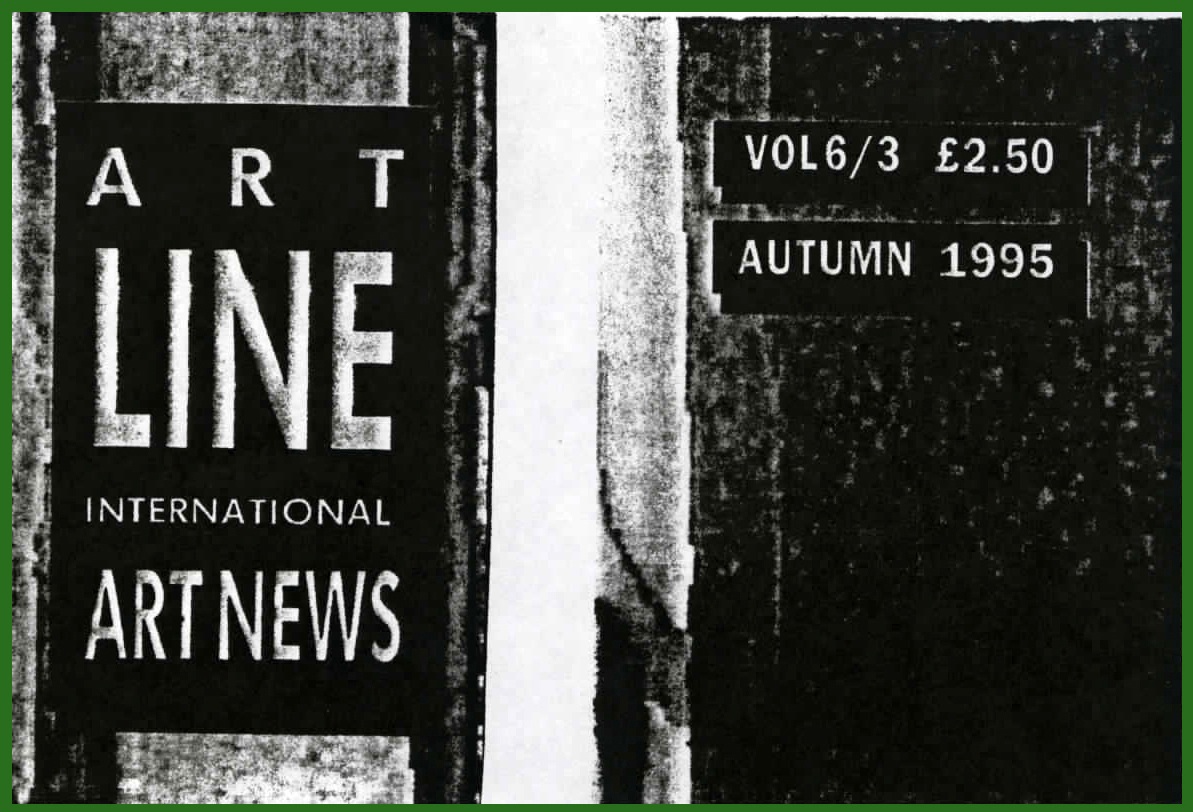ARTnews
Maite Lorés
Autumn 1995
From: Lorés, Maite. “The Art of Cuba, Art Line International,” ARTnews,vol.6, no.3. Autumn, London, England, 1995 (illust.) pp. 18 – 20.
The Art of Cuba, Art Line International
Maite Lorés
Bruguera sees her decision to stay in Cuba almost as a mission, and considers the artist as a cultural archaeologist bringing to the collective memory something of the forgotten past.
In a first series of works from the early ‘90s, she adopted an alter-ego by recreating the works of Ana Mendieta, a Cuban artist who left for the USA in the early ‘60s. Mendieta was then only thirteen and like many Cubans at the beginning of the Revolution her family fell prey to the popular anti-communist demonology. Bruguera tried to rescue the work of her emigré alter-ego by assuming Ana Mendieta’s personality and giving form to the idea that Mendieta had re-returned to her native Cuba to continue her work. From a western perspective, it is only too easy to see this as a feminist cliché. For the Cuban artist, however, this is seen as the embodiment of territoriality. In cultural terms, the emigré artist continues to belong to a place long after he or she has left.
In a second series, Memorias de la Postguerra (Postwar Memories), her work became a metaphor for what was happening between artist and the institutions. By trying to define their positions, the artists saw themselves involved in a war, of which all those who had left the country were casualties. In installations like Dédalo y el imperio de salvación (Daedalus and the Empire of Salvation), she created a monument to the rafters who flee Cuba on their makeshift vessels of salvation. In El viaje (The Journey), an installation in the shape of Cuba, was made out of packages containing personal ‘memories’ left behind on the island.
In the series exhibited at the Gasworks Studios, De lo posible (About the Possible), Bruguera constructed a series of flying objects. Those who have dollars can now afford to travel by air, but flying can also be a metaphorical activity, a dream, where one can invent and improvise to compensate for things in short supply. To construct her flying machines, or the wings of Greek mythology, Bruguera scoured the streets of Vauxhall and Whitechapel for objects that would be luxuries in Cuba but here are condemned to the dustbin and the skip. A petrol can, a glove, a broken umbrella, can all be transformed by the power of her metaphors. The emotional impact of the piece validates the use of a familiar language by the originality of its intention.
